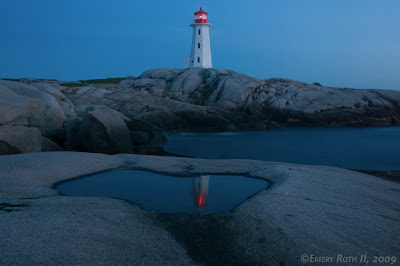PHOTOGRAPHER'S JOURNAL: I met Howard on the pier at Thurston's Lobster Pound in Bernard Harbor, Maine. He and Roger were loading buckets of herring onto the "Dillon, Chris, and Linda." The herring would be chopped up for bait once they were at sea. I had already asked Howard if I could photograph him at work. When Roger went to get more herring Howard began a conversation about women, drink, marriage, and life. By the time he was ready to push off, we were friends.
The previous year I had vowed to get beyond photographs of the landscape, architecture and props of lobstering and photograph the lobstermen at work. Bernard, Maine, was the most likely place. In most of the lobster ports the fishermen leave from private docks which can be scattered. On some piers a photographer could wait all morning, and no lostermen would appear.
In Bernard there are two common piers used by most of the lobstermen. On the community pier lobstermen begin arriving in their pickups at sunup. The pier is a place of socializing as they fetch their boats, load them with bait and sometimes traps, stowe away lunch buckets and drinks for the day's work, and climb into their vinyl lobstering overalls. In the afternoon the boats return with the day's catch. They sell the lobsters to independent marketers who drive onto the wharf in white delivery trucks and wheel large scales out on the tailgate.
Other lobstermen leave from Thurston's pier. The lobstermen who sell at Thurston's take a lower price but they don't have to work to sell, and they use Thurston's large, dockside warehouses to store their bait. The pier is often a labyrinth of passageways through the lobstermen's idle traps.
That's where I met Howard and Roger and shared philosophy. As they pushed off, I asked if they would be back the next day. When Howard told me, "yes," he also asked if I'd like to come along.
I met them at 5:30 AM. This slide show contains some of the more than 300 images I shot aboard the "Dillon, Chris, and Linda," and it is a first attempt at telling a lobstering tale. I fear it fails to convey the fast pace and exhausting,
assembly line routine of the work. In about 4 hours they pulled, emptied, baited, and set 200 traps and caught 55 usable lobsters.

























